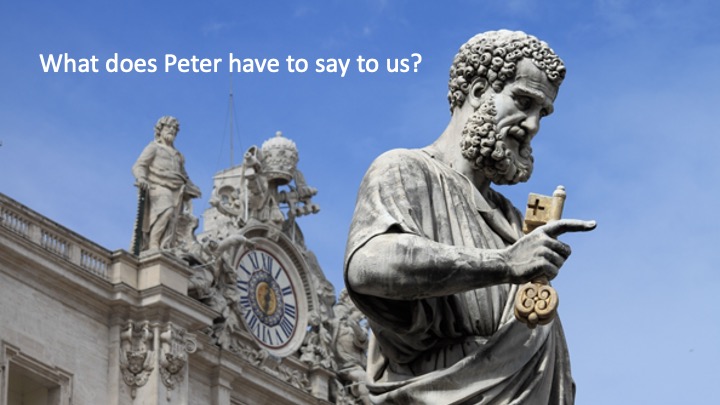Peter the Fragile Rock 3
Kevin Ireland
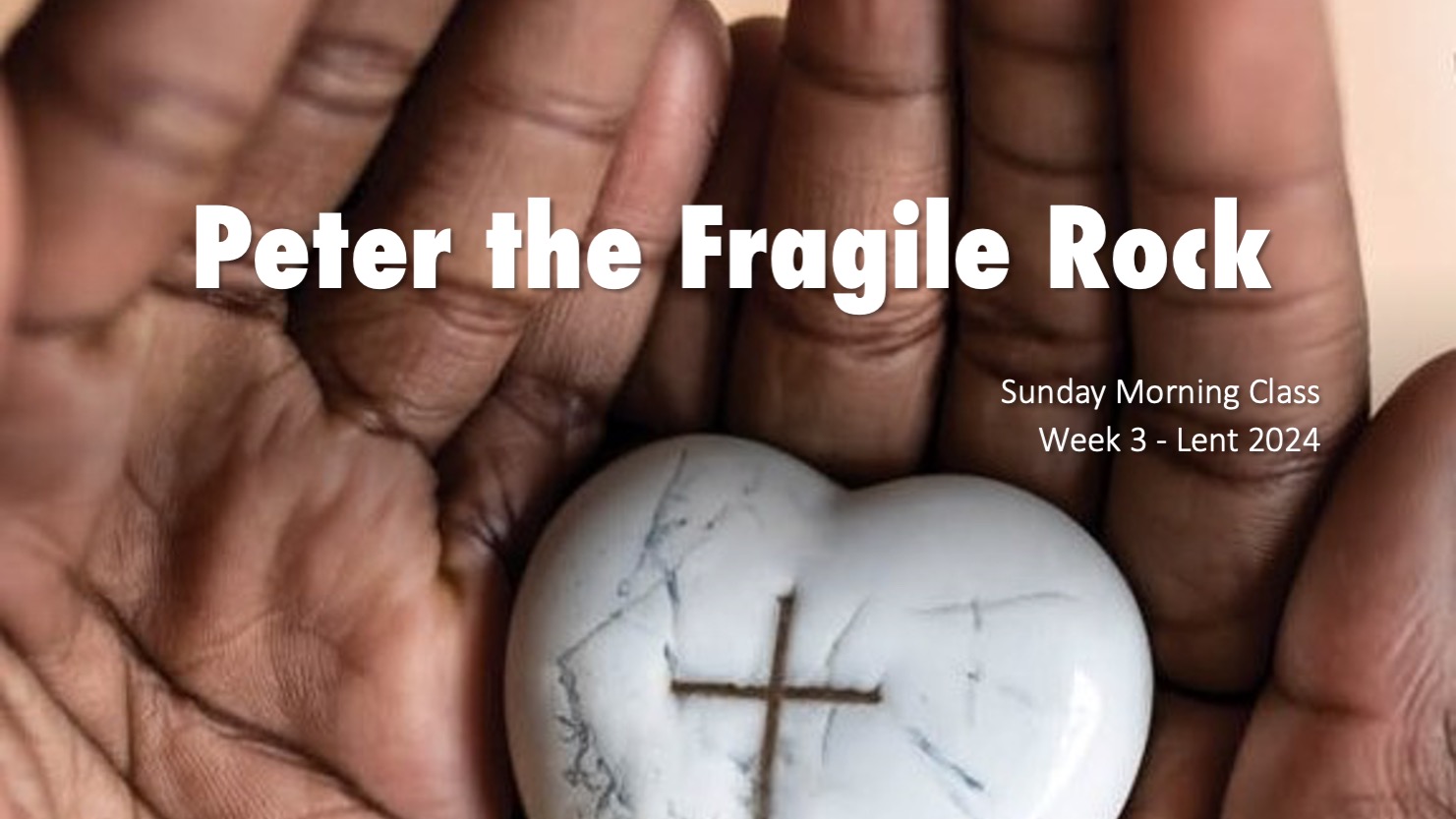
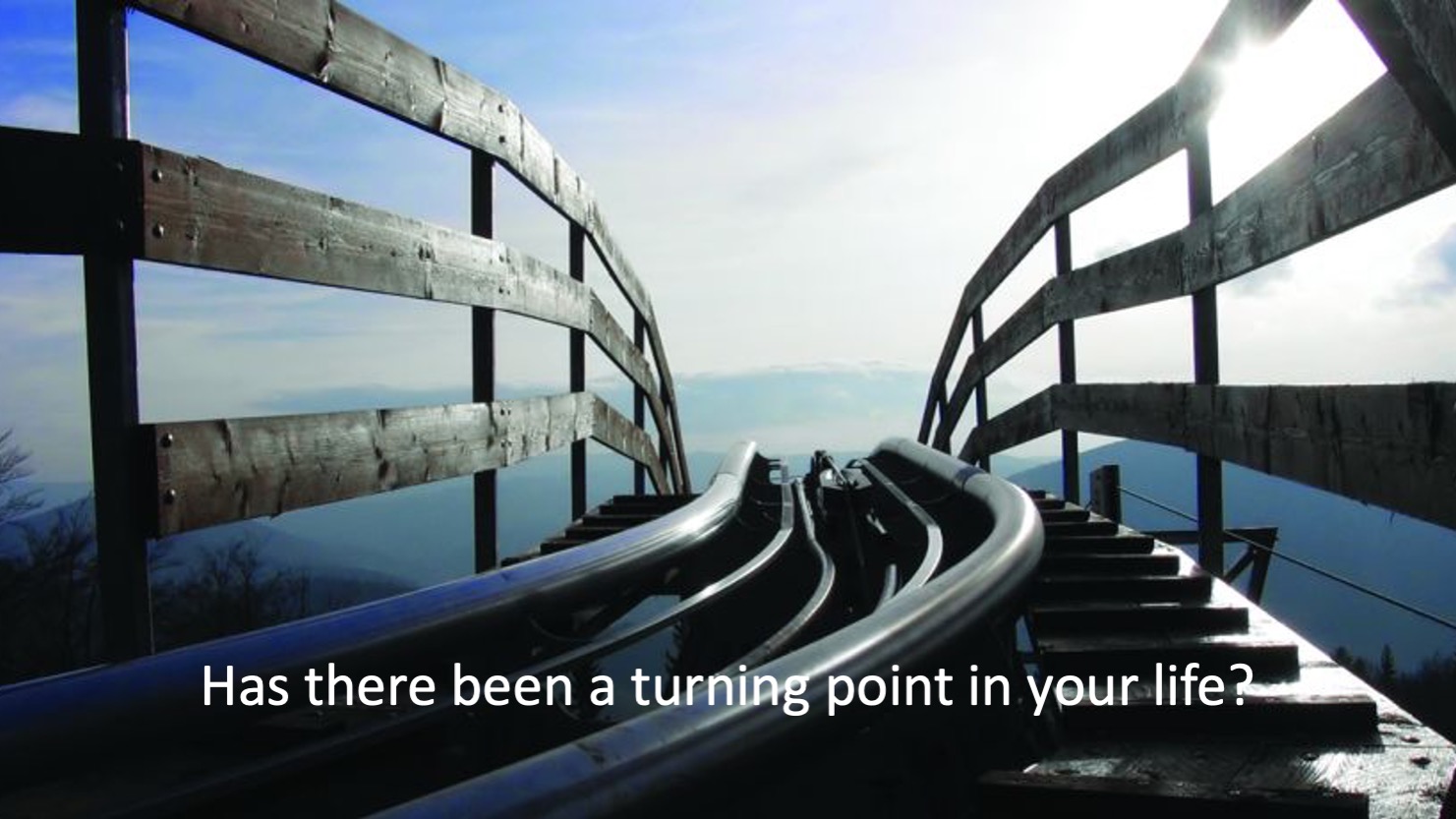
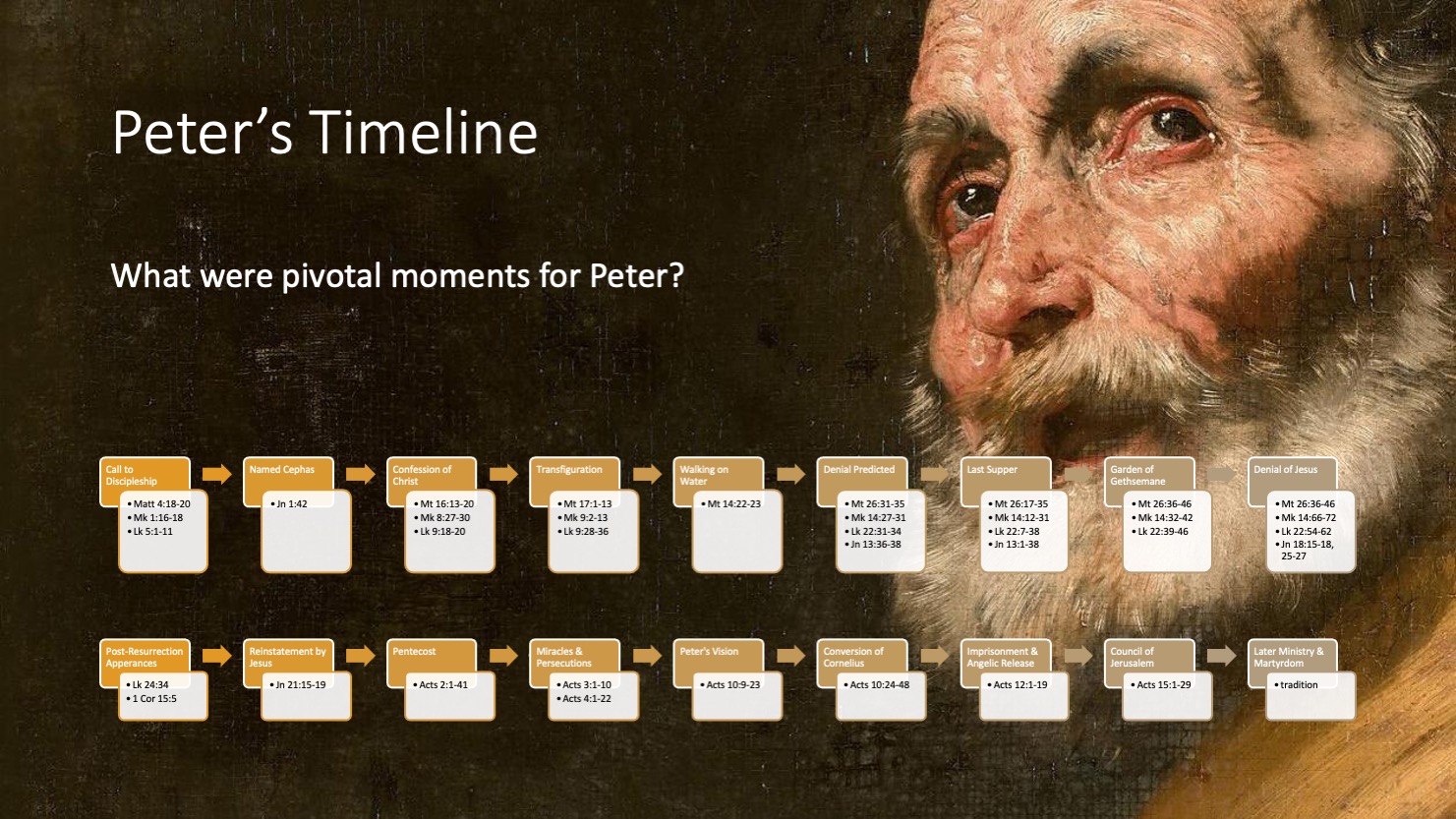
Peter the Fragile Rock
Peter’s Timeline
What were pivotal moments for Peter?
- Birth and Early Life No specific information about Peter's birth and early life is provided in the Bible.
- Call to Discipleship: Peter is called by Jesus along with his brother Andrew while they are fishing. Scripture: Matthew 4:18-20, Mark 1:16-18, Luke 5:1-11.
- Naming as "Cephas" (Peter): Jesus gives Simon the name Peter, meaning "rock."Scripture: John 1:42.
- Confession of Jesus as the Christ: Peter confesses Jesus as the Christ, and Jesus pronounces him blessed. Scripture: Matthew 16:13-20, Mark 8:27-30, Luke 9:18-20.
- Transfiguration: Peter witnesses the transfiguration of Jesus on the mountain.Scripture: Matthew 17:1-13, Mark 9:2-13, Luke 9:28-36.
- Walking on Water: Peter attempts to walk on water but begins to sink.Scripture: Matthew 14:22-33.
- Peter's Denial Predicted: Jesus predicts Peter's denial of Him.Scripture: Matthew 26:31-35, Mark 14:27-31, Luke 22:31-34, John 13:36-38.
- The Last Supper:Peter is present at the Last Supper and disputes with Jesus about washing his feet. Scripture: Matthew 26:17-35, Mark 14:12-31, Luke 22:7-38, John 13:1-38.
- Garden of Gethsemane:Peter, James, and John accompany Jesus to the Garden of Gethsemane. Scripture: Matthew 26:36-46, Mark 14:32-42, Luke 22:39-46.
- Denial of Jesus: Peter denies Jesus three times as predicted. Scripture: Matthew 26:69-75, Mark 14:66-72, Luke 22:54-62, John 18:15-18, 25-27.
- Post-Resurrection Appearances: Peter witnesses the resurrected Jesus.Scripture: Luke 24:34, 1 Corinthians 15:5.
- Reinstatement by Jesus: Jesus reinstates Peter, asking him three times if he loves Him. Scripture: John 21:15-19.
- Day of Pentecost: Peter plays a prominent role in preaching on the Day of Pentecost, leading to the conversion of thousands.Scripture: Acts 2:1-41.
- Miracles and Persecutions: Peter performs miracles and faces persecution for preaching in the name of Jesus. Scripture: Acts 3:1-10; 4:1-22.
- Peter's Vision: Peter has a vision of unclean animals, symbolizing the inclusion of Gentiles in the gospel. Scripture: Acts 10:9-23.
- Conversion of Cornelius: Peter preaches to and witnesses the conversion of Cornelius and his household, the first Gentile converts.Scripture: Acts 10:24-48.
- Imprisonment and Angelic Release: Peter is imprisoned but miraculously released by an angel. Scripture: Acts 12:1-19.
- Council of Jerusalem: Peter participates in the Council of Jerusalem, discussing the inclusion of Gentiles without circumcision. Scripture: Acts 15:1-29.
- Later Ministry: Peter's later ministry is not extensively documented in the Bible. Tradition holds that he may have traveled and established churches.
- Martyrdom: Tradition suggests that Peter was martyred, possibly by crucifixion, during the reign of Emperor Nero in Rome.
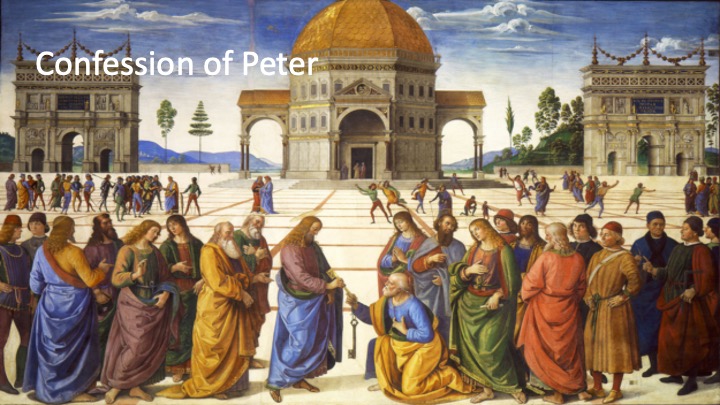
The images of Christ as a new temple and Peter as the rock are wonderfully illustrated in the beautiful and theologically rich painting by Pietro Perugino entitled Delivery of the Keys. The painting shows a magnificent landscape, which alone makes it a masterpiece of Italian Renaissance art. But what is more interesting is what is happening in front of the landscape. Behind the figures of Jesus, Peter, and the others who are gathered around them, there is a building that represents the Jerusalem Temple. Yet, Perugino’s rendering of the Temple looks curiously like the building that still occupies the site, a structure built upon the raised foundation seen in the painting—the foundations of the long-gone Temples of Solomon and Herod. Never having visited Jerusalem himself, Perugino painted his Temple based on then-contemporary pilgrims’ sketches of the gold-domed, eight-sided Dome of the Rock, the mosque built by Muslims in the seventh century. Perugino depicts other buildings that wouldn’t have been there at the time of Christ but which pilgrims would have seen and sketched, such as Constantine’s triumphal arch.
Directly in front of these “modern” buildings—i.e., circa fifteenth-century Jerusalem modern—Perugino shows Jesus giving the keys to Peter. Note that this is not taking place in Caesarea Philippi, where the actual event took place, but on the Temple Mount. Since Solomon built his Temple on this mount or “rock,” the same one upon which Abraham prepared to sacrifice Isaac, this is a symbolically fitting setting for Perugino’s painting: for Christ is building his Church—his own holy Temple, if you will—upon the “rock” of Peter. Perugino brilliantly juxtaposed these two rocks: that of Abraham’s sacrifice and Solomon’s Temple in the background and that of Peter in the foreground.
The theological significance of the painting is even more poignant because the painting is displayed in the Sistine Chapel, where cardinals gather to elect a new pope as successor of St. Peter. Following his election in the last conclave, Pope Francis would have sat looking directly at that painting. This is another example of how Catholic art is never simply decorative. It’s theological and catechetical. Just as in Perugino’s painting, it’s always teaching us something important about the Faith.
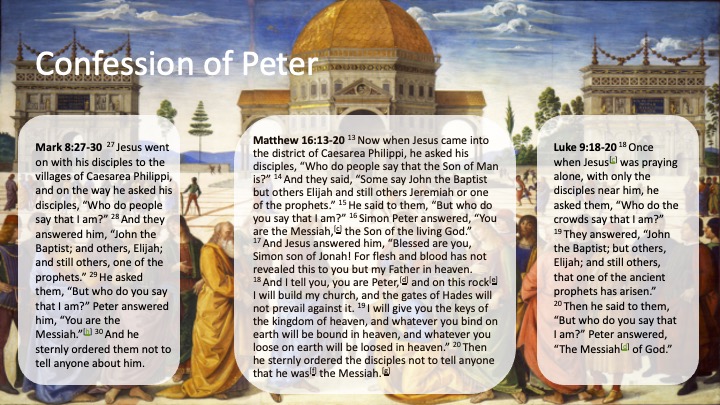
Peter the Fragile Rock
Mark 8: 27-30
27 Jesus went on with his disciples to the villages of Caesarea Philippi, and on the way he asked his disciples, “Who do people say that I am?” 28 And they answered him, “John the Baptist; and others, Elijah; and still others, one of the prophets.” 29 He asked them, “But who do you say that I am?” Peter answered him, “You are the Messiah.” 30 And he sternly ordered them not to tell anyone about him.
Matthew 16:13-20
13 Now when Jesus came into the district of Caesarea Philippi, he asked his disciples, “Who do people say that the Son of Man is?” 14 And they said, “Some say John the Baptist but others Elijah and still others Jeremiah or one of the prophets.” 15 He said to them, “But who do you say that I am?” 16 Simon Peter answered, “You are the Messiah, the Son of the living God.” 17 And Jesus answered him, “Blessed are you, Simon son of Jonah! For flesh and blood has not revealed this to you but my Father in heaven. 18 And I tell you, you are Peter, and on this rock I will build my church, and the gates of Hades will not prevail against it. 19 I will give you the keys of the kingdom of heaven, and whatever you bind on earth will be bound in heaven, and whatever you loose on earth will be loosed in heaven.” 20 Then he sternly ordered the disciples not to tell anyone that he was the Messiah.
Luke 9: 18-20
18 Once when Jesus was praying alone, with only the disciples near him, he asked them, “Who do the crowds say that I am?” 19 They answered, “John the Baptist; but others, Elijah; and still others, that one of the ancient prophets has arisen.” 20 Then he said to them, “But who do you say that I am?” Peter answered, “The Messiah of God.”
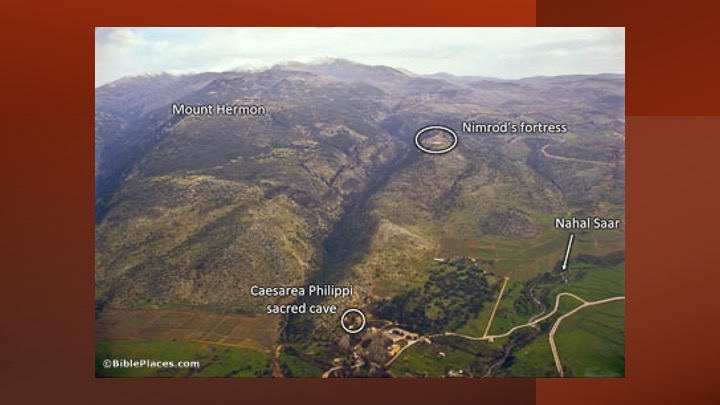
Caesarea Philippi, located
in the northeastern region of Galilee, was a significant ancient city during
the first century AD. One of the most notable features of the city was the
sacred cave known as the "Gate of Hades," situated at the foot of
Mount Hermon. This cave was considered sacred by various religious groups of
that time.
The city was a religious hub where multiple belief systems coexisted. The
Greeks worshipped the god Pan there, and it was known in ancient times as
Paneas, named after Pan. The cave was also associated with the worship of the
god Baal, who was a deity worshipped in various regions in the ancient Near
East.
During the first century AD, the area was under Roman rule, and the city was
renamed Caesarea Philippi by Herod Philip, in honor of Roman Emperor Caesar
Augustus. The city also included a temple dedicated to the worship of Augustus.
Aside from these religious structures, Caesarea Philippi was a bustling city
with a diverse population, and it served as a center for commerce and trade.
The city's strategic location near the headwaters of the Jordan River and at
the base of Mount Hermon made it an essential regional center.
Overall, Caesarea Philippi was a city with a rich tapestry of religious traditions
and a vital center of activity during the first century AD.
Peter The Fragile Rock
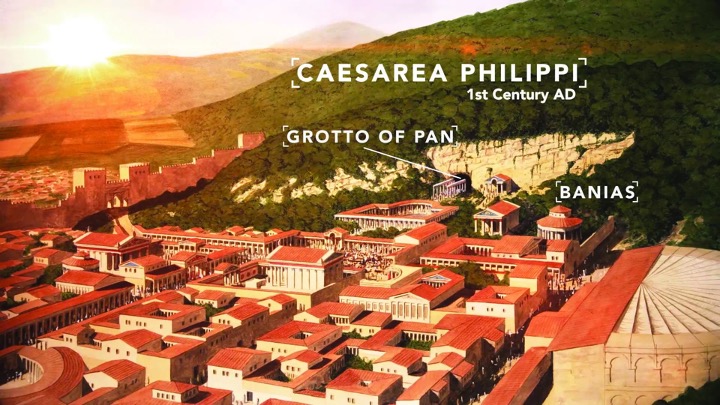
• Situated 25 miles (40 km) north of the Sea of Galilee
• It is located at the foot of Mount Hermon, north of the Golan Heights, in the Israeli portion.
• location of one of the largest springs feeding the Jordan River.
• source of the Banias River, one of the main tributaries
• abundant water supply has made the area very fertile and attractive for religious worship.
• Numerous temples were built in this city in the Hellenistic and Roman periods.
• Archaeologists uncovered a shrine dedicated to Pan and related deities
• Banias or Banyas (Arabic: بانياس الحولة; Modern Hebrew: בניאס;[2] Ancient Greek: Πανεάς – Paneas (for Pan)
• remains of an ancient city founded sometime after the conquest by Alexander the Great and inhabited until 1967.
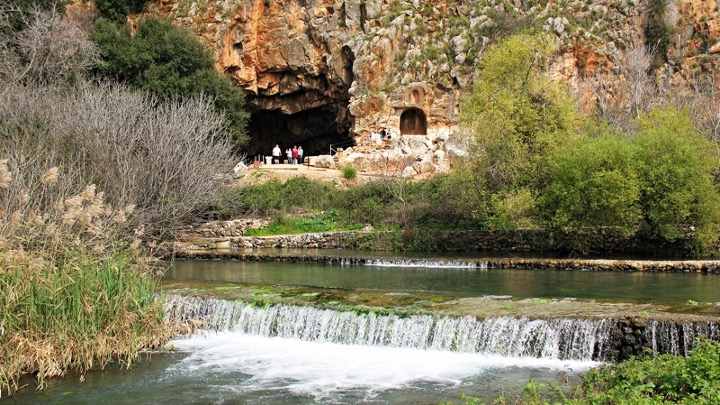
Now it’s a park and national nature preserve.
Peter The Fragile Rock
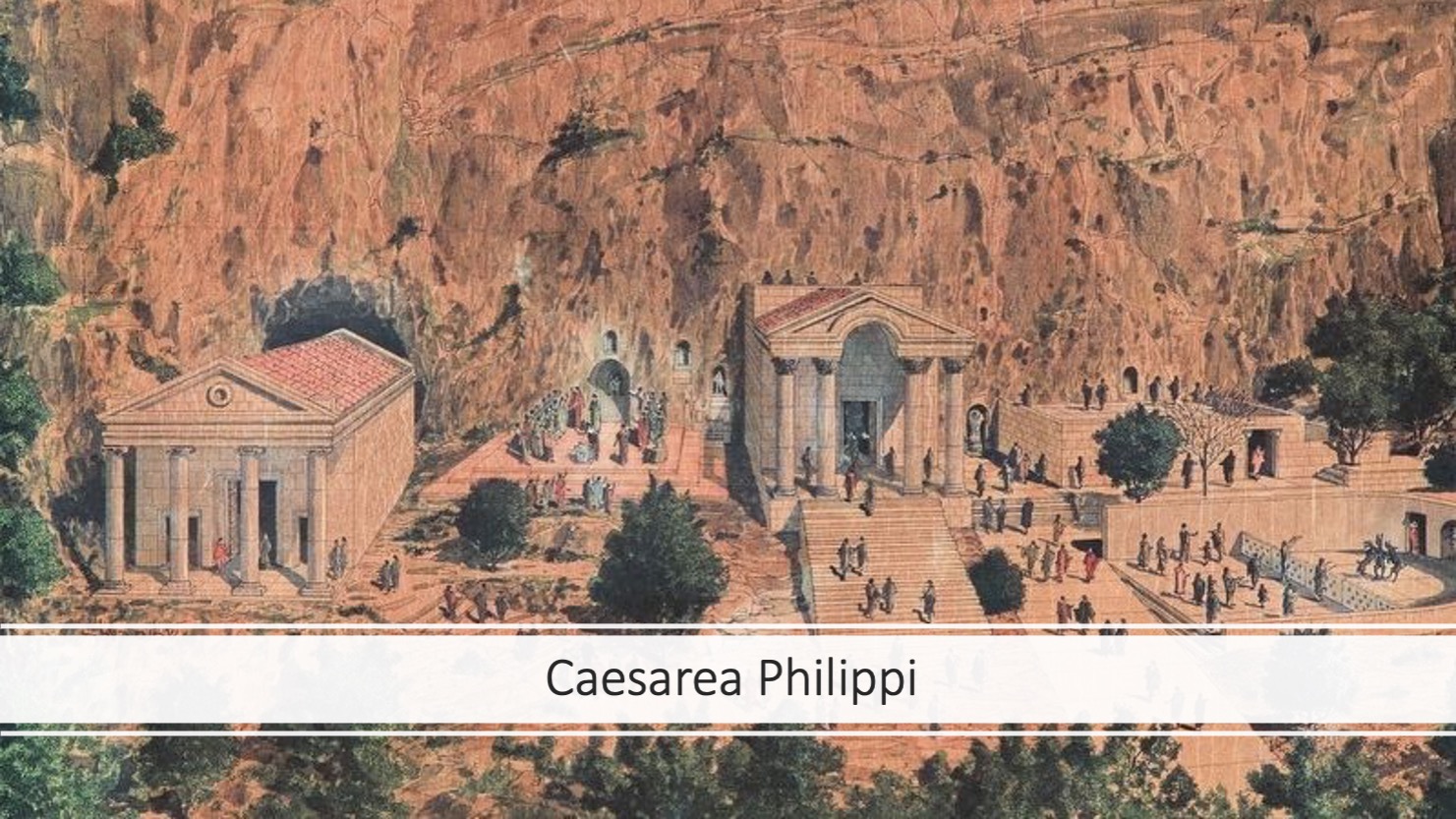
Caesarea Philippi
And artists rendering of what it might have looked like – the Temple of Pan on the western side in front of the cave and the Dancing Goats on the other end.
And: a brief history:
•Alexander the Great conquered area in 3rd cent. BCE
•Natural beauty of site with cave and springs that welled up made it ideal for worship
•Sanctified the cave dedicating it to Pan – god of forest and shepherds
•Arabic name, Banyas comes from earlier name Panyas (for Pan)
•Pan cave -
•Rome incorporated area into Herod’s kingdom in the last part of the first century BCE
•Herod built a temple near the springs and named it for the Roman emperor Augustus
•Herod’s son Philippus ruled from here calling the town Caesarea Phlippi
•1st cent. BCE–Paved courtyard and path
•Temples with statues, including the temple of Augustus, and rock-carved niches and Greek inscriptions were carved indicating worship of other gods besides Pan
•Continued pagan activity well into the Christian Byzantine era
•Archaeological excavation by Israel Antiquities Authority found remains of temples and cult-courts, scriptures, alters, and inscription – people bringing food, ceramic and glass vessels, alters and statuettes to Pan and the Nymphs along with Zeus, Asclepius, Athena, Hera, Aphrodite, Artemis, Dionysus, and Aris
•Eastern end of sanctuary near the “Sacred Forest,” has two structures associated with a unique cult of dancing goats – one at where they danced and one where they were buried
An artificial cave was quarried in the cliff-face opposite the courtyard and there was a statue of Pan.
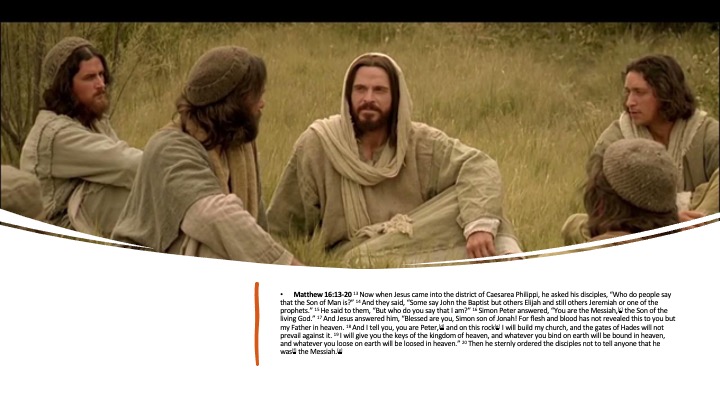
Peter The Fragile Rock
Matthew 16:13-20 13
Now when Jesus came into the district of Caesarea Philippi, he asked his disciples, “Who do people say that the Son of Man is?” 14 And they said, “Some say John the Baptist but others Elijah and still others Jeremiah or one of the prophets.” 15 He said to them, “But who do you say that I am?” 16 Simon Peter answered, “You are the Messiah, the Son of the living God.” 17 And Jesus answered him, “Blessed are you, Simon son of Jonah! For flesh and blood has not revealed this to you but my Father in heaven. 18 And I tell you, you are Peter, and on this rock I will build my church, and the gates of Hades will not prevail against it. 19 I will give you the keys of the kingdom of heaven, and whatever you bind on earth will be bound in heaven, and whatever you loose on earth will be loosed in heaven.” 20 Then he sternly ordered the disciples not to tell anyone that he was the Messiah.
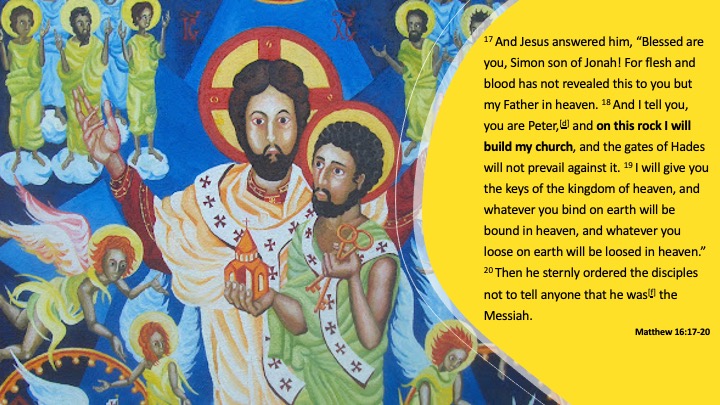
Thousands of pages have been written and thousands of lives have been lost – fighting over what these words mean.
Peter The Fragile Rock
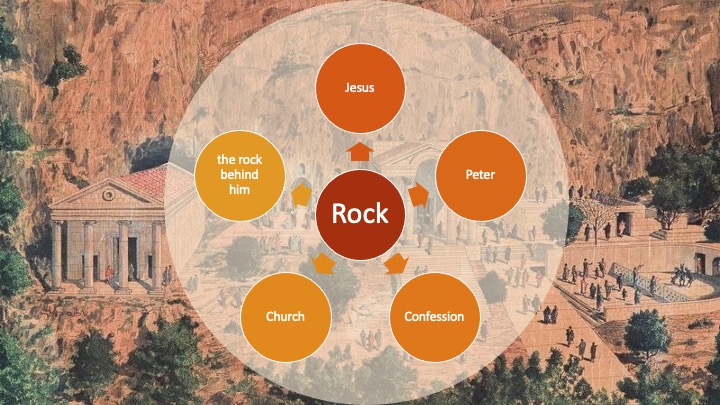
So what could the Rock really mean. As you can imagine, different theologians in different faith traditions can differ in their interpretations. Is the Rock really Peter, or is the confession itself the Rock? Or maybe does the Rock symbolize the Church?
Oh wait! Maybe Jesus was referring to the rock behind him as he spoke. Or is the Rock really Jesus? Inquiring minds want to know.
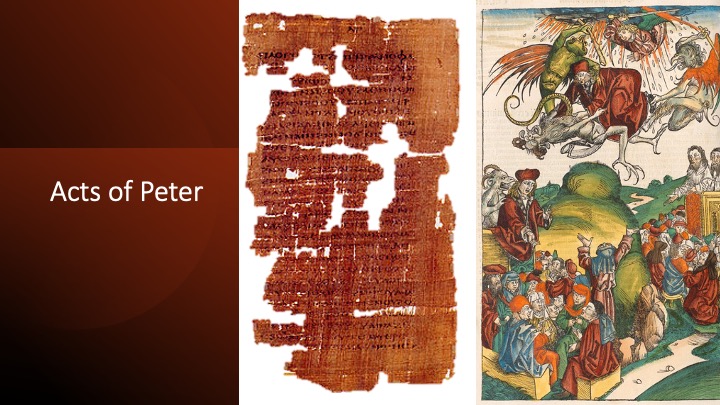
The Acts of Peter is one of the earliest of the apocryphal Acts of the Apostles in Christianity, dating to the late 2nd century AD.
• originally composed in Koine Greek probably in Asia Minor.[1]
• The style of the Acts' writing is quite similar to that of four other apocryphal Acts – Acts of Andrew, Acts of John, Acts of Paul, and Acts of Thomas.
• all five of these works were traditionally attributed to a single author Leucius Charinus. Epiphanius (c. 310/320 – 403) had earlier identified Leucius as a companion of John the Apostle.[2]
• The majority of the text has survived only in the Latin translation of the Codex Vercellensis, under the title Actus Petri cum Simone ("Act of Peter with Simon").
• description of a miracle contest between Saint Peter and Simon Magus,
• Peter revives a dead tuna
• the first record of the tradition that Saint Peter was crucified head-down,
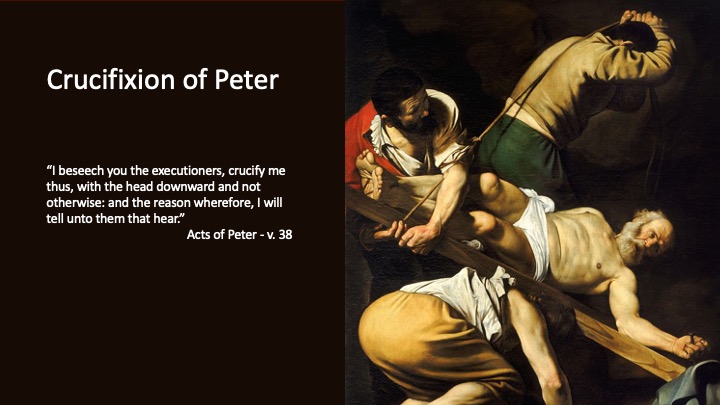
Crucifixion of Peter
“I beseech you the executioners, crucify me thus, with the head downward and not otherwise: and the reason wherefore, I will tell unto them that hear.”
Acts of Peter - v. 38
RC version – Jesus foreshadows Peter’s death at the end of Gospel of John
John 21-18 18 Very truly, I tell you, when you were younger, you used to fasten your own belt and to go wherever you wished. But when you grow old, you will stretch out your hands, and someone else will fasten a belt around you and take you where you do not wish to go.” 19 (He said this to indicate the kind of death by which he would glorify God.) After this he said to him, “Follow me.”
Origen - Peter appears to have preached in Pontus, Galatia, Bithynia, Cappadocia, and Asia to the Jews of the dispersion. And at last, having come to Rome, he was crucified head-downwards; for he had requested that he might suffer in this way…. These facts are related by Origen in the third volume of his Commentary on Genesis (III.1).
It is, therefore, recorded that Paul was beheaded in Rome itself, and that Peter likewise was crucified under Nero. This account of Peter and Paul is substantiated by the fact that their names are preserved in the cemeteries of that place even to the present day (II.25.5). – also Origen
There was Peter who by reason of unrighteous jealousy endured not one not one but many labors, and thus having borne his testimony went to his appointed place of glory.
Acts of Peter “I beseech you the executioners, crucify me thus, with the head downward and not otherwise: and the reason wherefore, I will tell unto them that hear.” v. 38
Peter The Fragile Rock
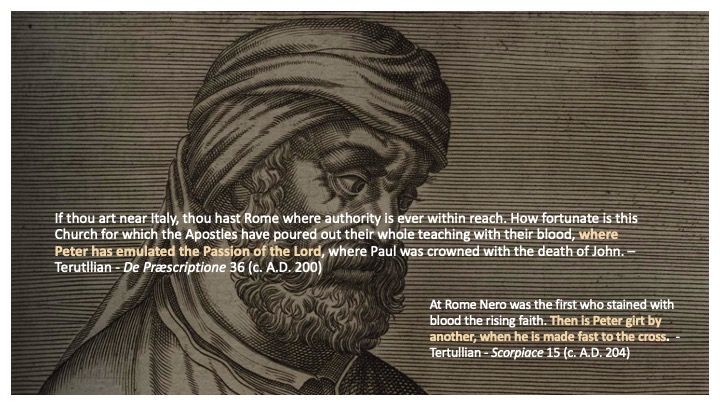
If thou art near Italy, thou hast Rome where authority is ever within reach. How fortunate is this Church for which the Apostles have poured out their whole teaching with their blood, where Peter has emulated the Passion of the Lord, where Paul was crowned with the death of John. – Terutllian - De Præscriptione 36 (c. A.D. 200)
At Rome Nero was the first who stained with blood the rising faith. Then is Peter girt by another, when he is made fast to the cross. - Tertullian - Scorpiace 15 (c. A.D. 204)
The earliest reference to Peter’s crucifixion - in Adversus Gnosticos Scorpiace, a treatise composed by Tertullian in the first decade of the 3rd century.[8][9]
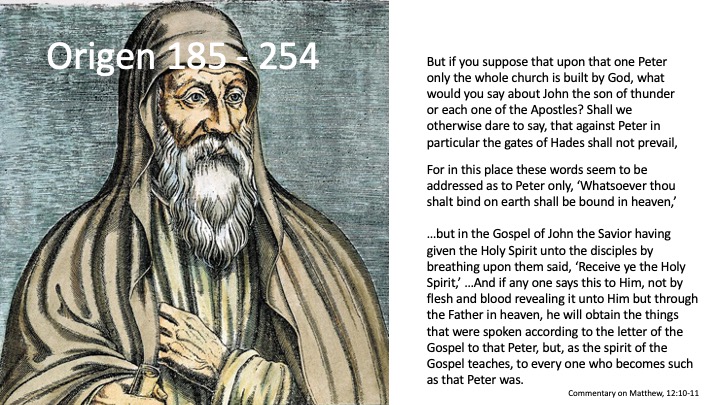
Origen 185 - 254
But if you suppose that upon that one Peter only the whole church is built by God, what would you say about John the son of thunder or each one of the Apostles? Shall we otherwise dare to say, that against Peter in particular the gates of Hades shall not prevail,
For in this place these words seem to be addressed as to Peter only, ‘Whatsoever thou shalt bind on earth shall be bound in heaven,’
…but in the Gospel of John the Savior having given the Holy Spirit unto the disciples by breathing upon them said, ‘Receive ye the Holy Spirit,’ …And if any one says this to Him, not by flesh and blood revealing it unto Him but through the Father in heaven, he will obtain the things that were spoken according to the letter of the Gospel to that Peter, but, as the spirit of the Gospel teaches, to every one who becomes such as that Peter was.
Commentary on Matthew, 12:10-11
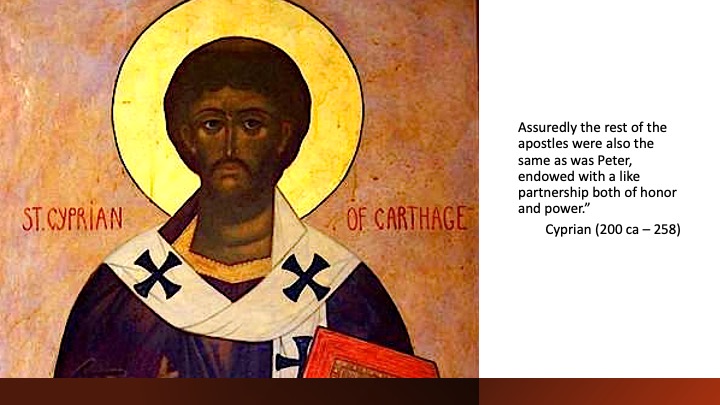
St. Cyprian of Carthage
Assuredly the rest of the apostles were also the same as was Peter, endowed with a like partnership both of honor and power.”
Cyprian (200 ca – 258)
Cyprian - was a bishop of Carthage and an early Christian writer of Berber descent
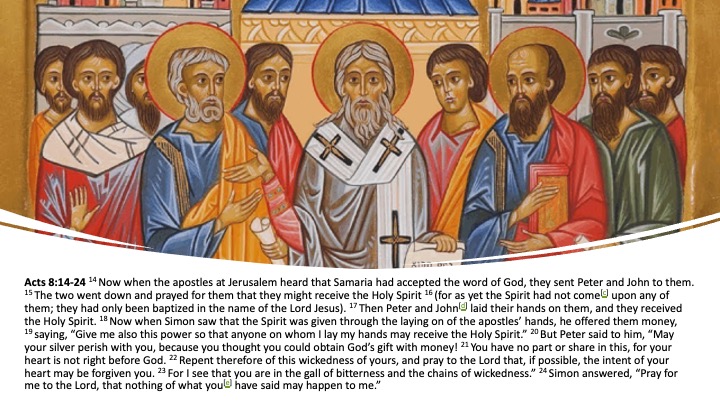
Acts 8:14-24
14 Now when the apostles at Jerusalem heard that Samaria had accepted the word of God, they sent Peter and John to them. 15 The two went down and prayed for them that they might receive the Holy Spirit 16 (for as yet the Spirit had not come upon any of them; they had only been baptized in the name of the Lord Jesus). 17 Then Peter and John laid their hands on them, and they received the Holy Spirit. 18 Now when Simon saw that the Spirit was given through the laying on of the apostles’ hands, he offered them money, 19 saying, “Give me also this power so that anyone on whom I lay my hands may receive the Holy Spirit.” 20 But Peter said to him, “May your silver perish with you, because you thought you could obtain God’s gift with money! 21 You have no part or share in this, for your heart is not right before God. 22 Repent therefore of this wickedness of yours, and pray to the Lord that, if possible, the intent of your heart may be forgiven you. 23 For I see that you are in the gall of bitterness and the chains of wickedness.” 24 Simon answered, “Pray for me to the Lord, that nothing of what you have said may happen to me.”
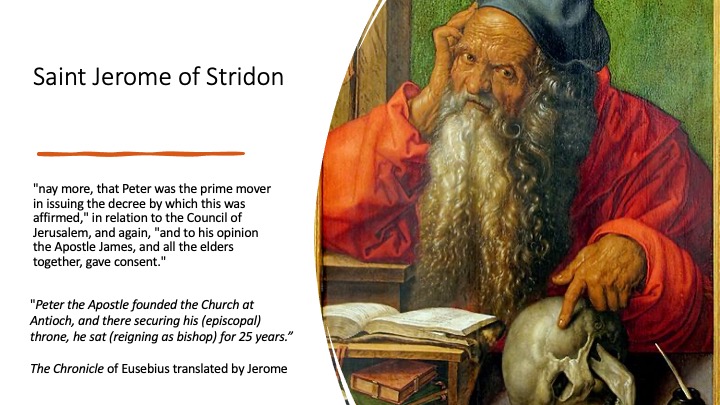
Saint Jerome of Stridon
"nay more, that Peter was the prime mover in issuing the decree by which this was affirmed," in relation to the Council of Jerusalem, and again, "and to his opinion the Apostle James, and all the elders together, gave consent."
"Peter the Apostle founded the Church at Antioch, and there securing his (episcopal) throne, he sat (reigning as bishop) for 25 years.”
The Chronicle of Eusebius translated by Jerome
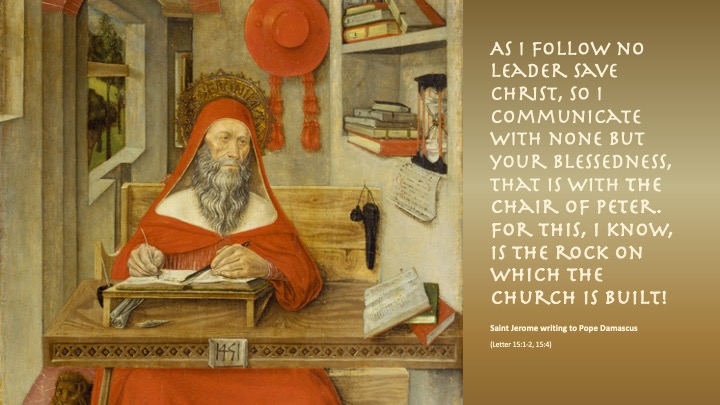
St. Jerome Writing to Pope Damascus
As I follow no leader save Christ, so I communicate with none but your blessedness, that is with the chair of Peter. For this, I know, is the rock on which the church is built!
St. Jerome Writing to Pope Damascus
As I follow no leader save Christ, so I communicate with none but your blessedness, that is with the chair of Peter. For this, I know, is the rock on which the church is built!
Saint Jerome writing to Pope Damascus
(Letter 15:1-2, 15:4)
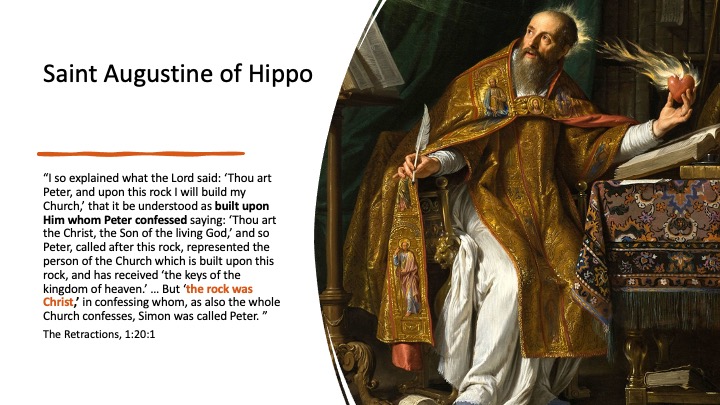
Saint Augustine of Hippo
“I so explained what the Lord said: ‘Thou art Peter, and upon this rock I will build my Church,’ that it be understood as built upon Him whom Peter confessed saying: ‘Thou art the Christ, the Son of the living God,’ and so Peter, called after this rock, represented the person of the Church which is built upon this rock, and has received ‘the keys of the kingdom of heaven.’ … But ‘the rock was Christ,’ in confessing whom, as also the whole Church confesses, Simon was called Peter. ”
The Retractions, 1:20:1
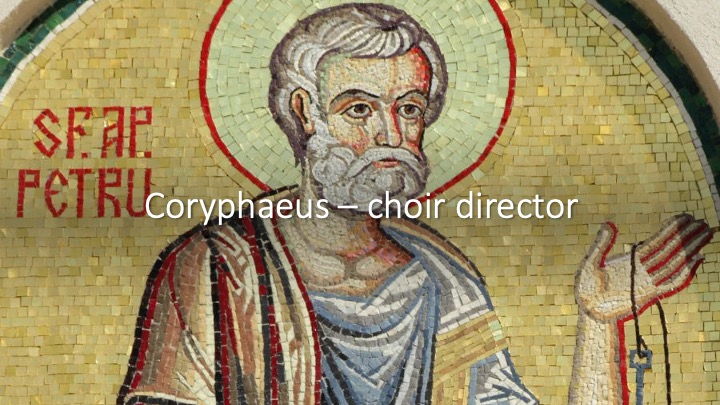
Coryphaeus – choir director
Eastern Orthodox refer to Peter as Coryphaeus – choir director
Peter as the icon of the episcopate[53] with his title of protos (first) implying a certain level of authority over the other apostles.
In this traditional Orthodox and Patristic view, the church is the local Eucharistic assembly ("the diocese" in today's terminology) and the one who holds the "Chair of Peter" (Cyprian's expression) is the bishop.
As a result, the primacy of Peter is relevant to the relationship between the bishop and the presbyters, not between the bishop of Rome and the other bishops who are all equally holding Peter's chair.
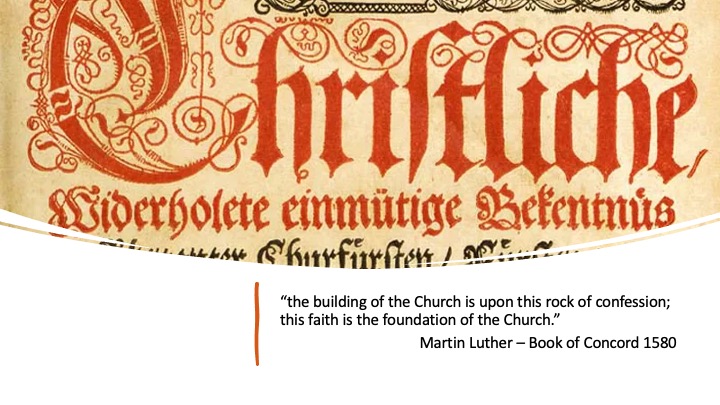
“the building of the Church is upon this rock of confession; this faith is the foundation of the Church.”
Martin Luther – Book of Concord 1580
